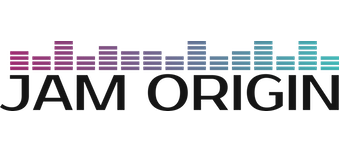I just purchased a guitar with Seymour Duncan SH-1 humbucking pickups, and I can’t believe how well the Midi Guitar 2 software reacts to these pickups in both rhythm and lead positions. Does Jam Origin have any recommendations to users as far as pickup choice?
Im not the one to comment but from my experience ( using 3 different guitars with three different humbucker sets ) I dont see a significant difference . Be good to hear what experts say here. Thanks
it is a bit of a complex issue.
Firstly, there is there the spectrum. the guitar tone exists out of hundreds of harmonics over the entire frequency spectrum, each note generating its own harmonic series.
To determine which notes are played MIDI Guitar finds the harmonics very helpfull, so this means: a bright pickup is better. Bright means: more info above the noise level.
Secondly, the pickup’s position creates a comb filter, this is the primairy color difference you hear between pickups at different spots. The closer the pickup is positioned to the bridge, the more the comb filter is shifted to a higher frequency. If it is shifted to a higher frequency, more of the original harmonics are preserved in the signal.
Since MIDI Guitar likes harmonics, the bridge position is therefore better than the neck position.
Just for reference: the effect can be clearly demonstrated with artificial harmonics on the string. If you try to play the harmonic row 2nd (12fret), 3rd (7th fret), 4th (5th fret), 5th (~4th fret), you will not hear all these harmonics unless you choose your bridge pickup.
MIDI Guitar will weight the velocity of your played note using the amplitudes of the harmonics involved. The weighing is based on a bridge pickup situation.
The neck pickup will often have too loud basses. that is where the “tone” knob comes in handy.
When you are playing single note lines, the spectrums density is way less complex, and the note is easily extracted. this means that single notes lines often work equally well on bright and warm sounding pickups at any pickup position.
In polyphonic situation however, many of the harmonics of the different notes played are occupying nearly the same spot in the spectrum. They will start “beating” one another: this causes the nice twirl in the chordal guitarsound, bit isn’t so nice for a pitch to midi converter… More harmonics and a higher tuned combfilter will help here to have enough harmonics left to have a good guess at which notes are played.
All this is a very technical, non player specific story: in real life each player attenuates its own harmonics: the picking position creates yet another combfilter, that is the frequency you hear when you pinch the string with your pick. these sounds don’t add new harmonics to the spectrum, the pick here just attenuates a certain frequency spot and the multiples thereof,
Last but not least there are the mechanical noises each player generates, and the accuracy of the picking. Undefined doublestroking or rubbing with a pick can not be clearly detected as a defined note start. This causes the “why can I just strum?” problem.
Personally I just use MG with any pickup. But when I want the best possible quality I go for the brightest pickup, in my case a single coil stratocaster bridge pickup on a solidbody guitar.
Wow!!! Thank you for that. but in the end Midi Guitar just WORKS for me. I would not be tempted with anything else. Bridge or neck it seems to work . Thanks again Paul.
Hi Paul,
Thank you for that detailed post.
Since this is “outside of the box” technology, I think it really helps when technical details like that are explained.
Do you have a blog about how to get the best out of MG?
An example would be to have artists who achieve blazing performance with MG talk about their setups, gear, guitars, interfaces etc.
Sorry for chiming in late. I think I have written this before, on some other topic regarding missing notes, and missing tracking. But I’ll repeat it here again, as it is just my experience, and not a die hard, set in stone recommendation.
Regarding pickups, most passive ones (single coils and humbuckers alike) do have a resonant peak frequency that is different from each model/make/brand. Active pickups like EMG has a more flat curve as well as built in limiting so to speak. A very mild and subtle limiting. But that’s why some people “hates” EMG and active pickups. I find them very useful and gets better tracking in MG2 due to (or thanks to) their high and clean output. The headroom to noise levels are pretty high, and no 50-60 Hz hum ever. Also, thanks to their “flatter” repsonse curve they may - as the detractors say - have a slight anonymosity to their sound. Some “too neutral” in character. I find them much useful especially when run through large pedalboards, and lots of effects running at the same time, which can mask and cover up other “sought after” vintage sounding passive pickups of the past.
However, this flat curve (or really: flatter) causes MG2 to trigger SLIGHTLY more properly all across and along the strings, and MG2 are less prone to double trigger notes. Or missing them out. It is the “strat” single coil pickups of EMG that I mean, they reside under a specific node under each string, as opposed to humbuckers which has a wider apperture so to speak.
Hope this helps. Too.
I would love to know what gear you are using?
